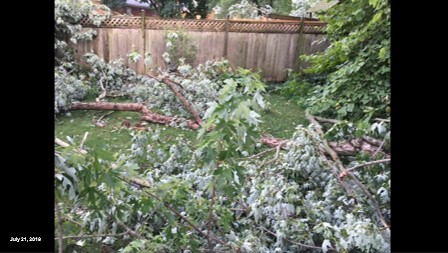By Helga Luest, M.A., CC-P
As we all start to enjoy spring and the nicer weather, it is important to take some time to notice how our world is changing. Mother Nature is generous with so many colors this time of year, but the summer months pose some increasingly dangerous climate threats.
You may have noticed that summers are getting hotter. In fact, the last ten years were the hottest years in recorded history. And with increased heat comes increased moisture in the air, which is why we have also seen severe weather events intensify. For Maryland, our greatest climate vulnerabilities include rising temperature and sea level, shifting rainfall patterns, and changing habitat. Our changing world and these vulnerabilities can already be seen along stream and riverbeds where erosion from intense rainstorms is uprooting trees at an unprecedented rate.
How might federal contracts be impacted?
Technical Assistance (TA): Working with grantees and organizations across the United States, climate-related disasters will not only change needs but require approaches that will be sensitive to trauma. Fires, hurricanes, floods, deep freezes, and heat extremes impact those we serve with TA and they can impact our ability to carry out TA.
Education: New research from Harvard University examined the economic impact of temperature and learning. The study showed the exposure to heat exposure inhibits cognitive skill development. Many schools do not have air conditioning – and with a warming world, this will impact learning and education. There are also a number of studies that demonstrate that hotter and more frequent hot days has a direct correlation to increased violent incidents, which may impact school climate and life at home for students.
Climate Change and Inequity
- According to the CDC, the population in the 10 most vulnerable counties in the U.S. are 81% minority.
- Flooding in the U.S. disproportionately impacts Black neighborhoods.
“… the gravest effects of all attacks on the environment are suffered by the poorest.” – Pope Francis (2015)
Workforce Development: With high unemployment rates during COVID-19 and the Biden Administration’s funding and intention to shift to a green economy, workforce development will be needed to retool and reposition individuals for success. Additionally, frontline workers have had a long stretch of stress and trauma that may require trauma-informed supports to promote healing and resilience.
Mental Health: COVID-19 has made us more aware of a few important things that directly relate to climate change: the air we breathe is precious; we are all interconnected; and flattening the curve will make a big difference (i.e., ending the virus and bringing carbon down to net zero). The pandemic also made us aware of how rapid adaptation to a new way of living, while protecting human health, also has mental health consequences. With climate change, new vocabulary like solastalgia, eco anxiety, and – one that I coined myself “garden grief” after a microburst storm in my back yard – all try to explain something we have never experienced before – the loss of biodiversity, our coastlines, tolerable summer temperatures, and part of our natural environment has a mental health impact. In fact, we know that nature can have a positive impact on mental health, but with climate change, that is at risk.
Helga Luest's yard after a microburst storm took more than 10 trees down in 2019.

Communication: We have known for decades that our climate was in trouble, but the science and environmental frames did not move people to action. The health frame, however, reveals the changes that are happening right now and how every climate action (i.e., transportation, buildings, energy, adaptation, sequestration) can have health co-benefits that will improve health right now. In order to reach our national goal of 50 percent reduction by 2030 and our local and state goals as well, the health frame will not only improve engagement in climate action but can also concurrently address environmental justice and health equity issues.
As we all celebrate Earth Month, reflecting on these changes and what we can do to reduce our carbon footprints is the least we can do – because all those little shifts in behavior add up!
We all need to do our part because there is no Planet B!



